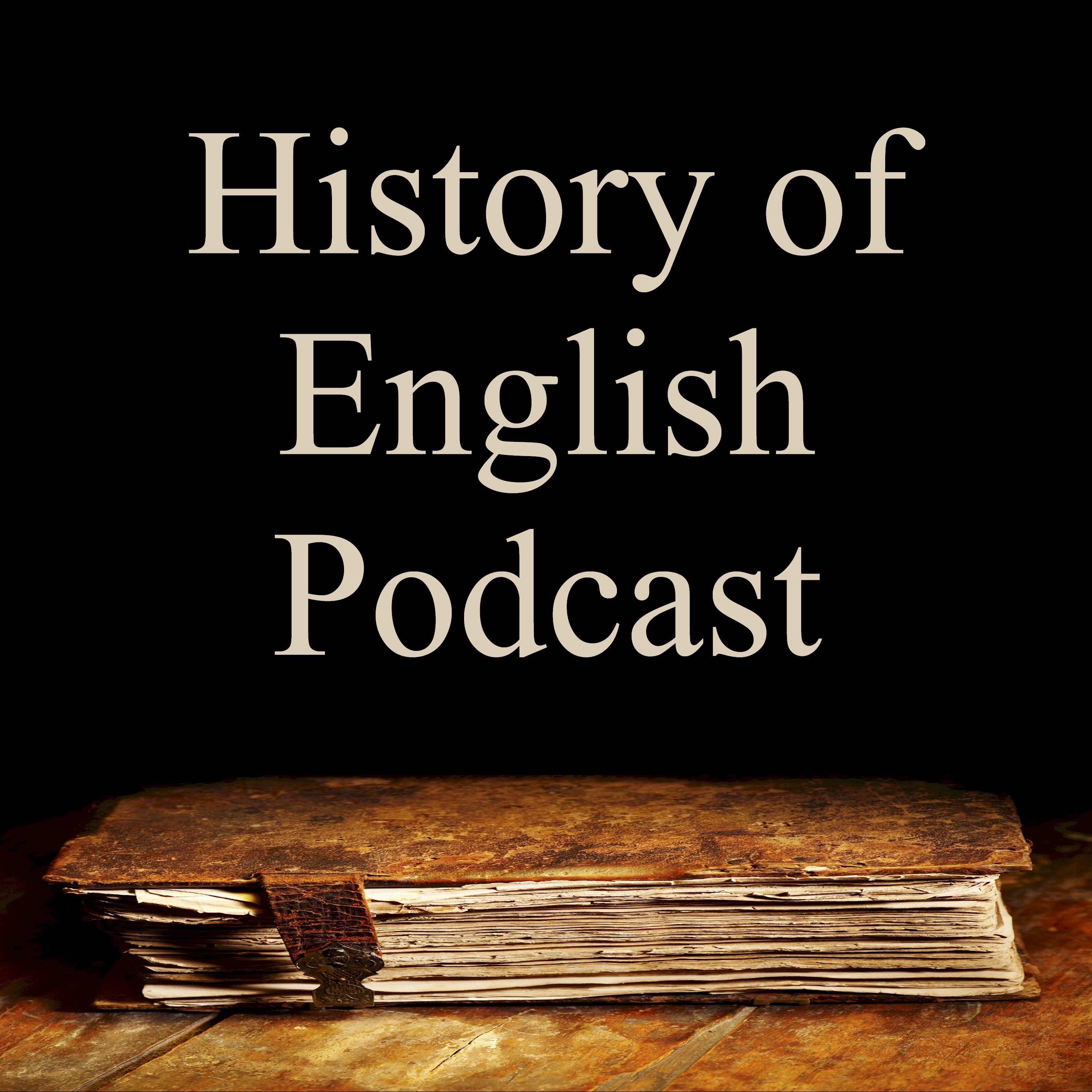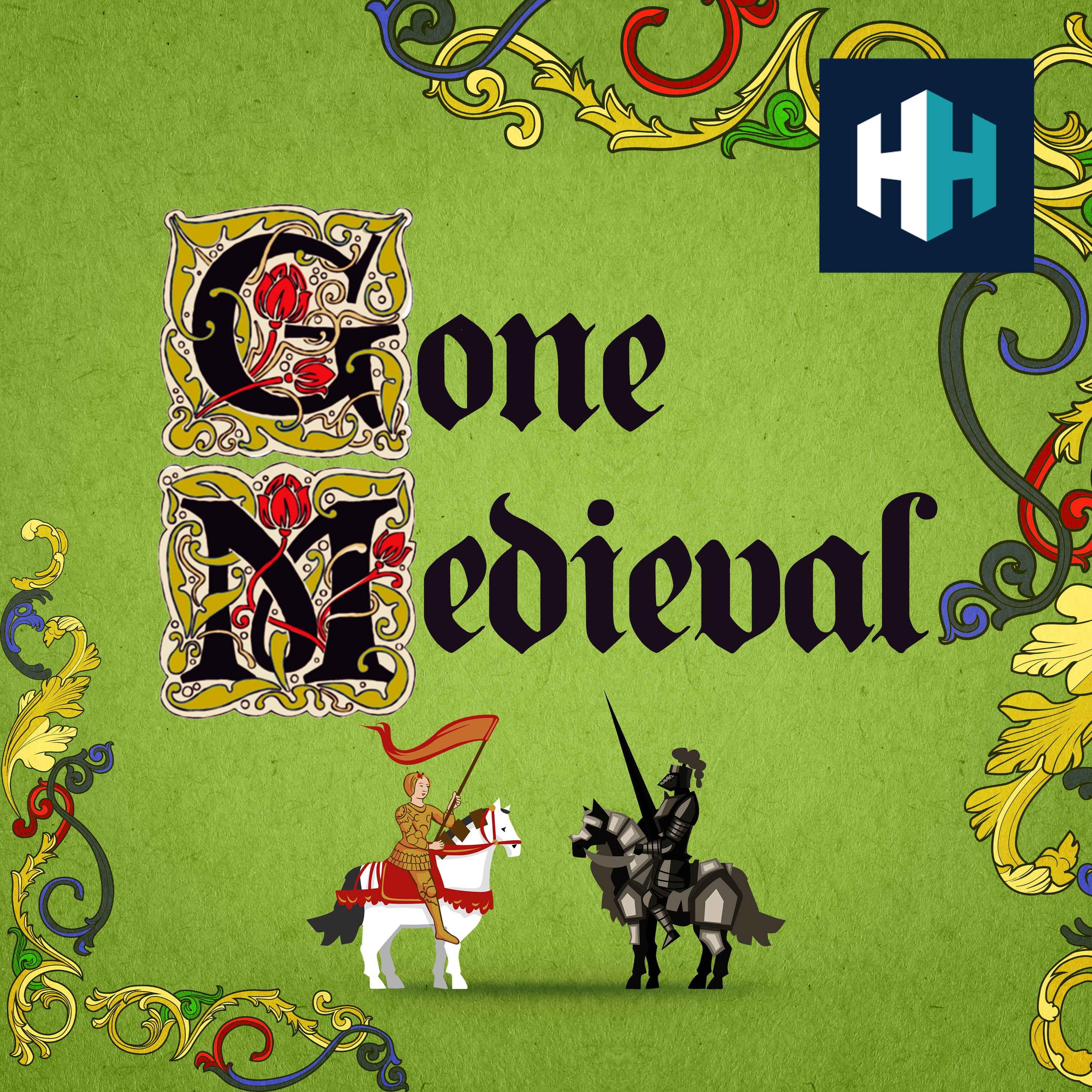
The Classic English Literature Podcast
The Classic English Literature Podcast
The Felix Culpa: George Herbert's "Easter Wings"
To mark the Easter holiday, we return to George Herbert, Jacobean poet and priest, and his most famous work, the pattern poem "Easter Wings."
Here's a link to an image of the poem:
https://clinicalpsychreading.blogspot.com/2016/03/easter-wings-george-herbert-15931633.html
Please like, subscribe, and rate the podcast on Apple, Spotify, YouTube Music, or wherever you listen. Thank you!
Email: classicenglishliterature@gmail.com
Follow me on Instagram, Facebook, Tik Tok, and YouTube.
If you enjoy the show, please consider supporting it with a small donation. Click the "Support the Show" button. So grateful!
Podcast Theme Music: "Rejoice" by G.F. Handel, perf. The Advent Chamber Orchestra
Subcast Theme Music: "Sons of the Brave" by Thomas Bidgood, perf. The Band of the Irish Guards
Sound effects and incidental music: Freesounds.org
My thanks and appreciation to all the generous providers!
Happy Sunday, everyone, and a Happy Easter for all those who celebrate! I’m hopping down the bunny trail with a little bonus egg for your basket here on the Classic English Literature Subcast, where we give rhyme a little more reason.
Listeners unfamiliar with this Christian feast should know that Easter marks the day when Jesus of Nazareth, believed by his followers to be the anointed one of God, came back to life after having been executed, crucified, for sedition by Roman authorities in first century Judea. This resurrection then becomes a sign of God's promise of eternal life for the repentant and faithful.
Today, we’re going to return to 17th-century poet and priest George Herbert and perhaps his most famous poem, “Easter Wings.” Regular listeners to the poddie might remember that we had a peep at Herbert’s verse in November of last year, when we Americans celebrate Thanksgiving day. Well, if you’re doing a historical survey of English literature, and you find yourself wallowing about in the 1600s, and you need a poet to help you celebrate the holidays, well, George Herbert is your go-to rhymester – as so, naturally, I went to him.
Here’s the poem:
Lord, who createdst man in wealth and store,
Though foolishly he lost the same,
Decaying more and more,
Till he became
Most poore:
With thee
O let me rise
As larks, harmoniously,
And sing this day thy victories:
Then shall the fall further the flight in me.
My tender age in sorrow did beginne
And still with sicknesses and shame.
Thou didst so punish sinne,
That I became
Most thinne.
With thee
Let me combine,
And feel thy victorie:
For, if I imp my wing on thine,
Affliction shall advance the flight in me.
“Easter Wings,” like “Gratefulness,” our Thanksgiving poem, comes from a collection of Herbert’s lyrics called The Temple, published posthumously in 1633. Naturally, we find it at the end of a group of poems focusing on Holy Week, from Palm Sunday to Easter Sunday. Perhaps the most notable things about this poem, especially to the casual reader, is its appearance. Its what's called a pattern poem. That is, the words and verses are arranged in such a way as to present a visual image. Many readers believe that “Easter Wings” is the first such poem, but we have pattern poems going back to the ancient Greeks, who employed at least six formal arrangements. In Herbert's, the lines are so measured that they appear as angel wings on the page. I’ve included a link to a picture in the show notes in case you have trouble imagining this. He opens the poem with a standard iambic pentameter line (though, actually, one could argue that the first foot is a trochee – the accent on the first syllable followed by an unaccented second syllable gives the rhythmical sense of falling, or perhaps bowing, genuflecting – an deft bit of prosody for a poem addressed to God.) But then the second line is in tetrameter, the third trimeter, and finally dimeter. Then, the lines build back up, one foot at a time, to pentameter. The second stanza follows the same pattern. Thus, not only do the verses physically resemble wings, but the repetition of the pattern provides a sense of the actual flapping, the stroke of wings in flight.
It’s quite charming, actually, but we’d be mistaken if we saw this as just a bit of playful gimmickry. Critic Joseph H. Summers calls the poem a hieroglyph, a word from the Greek meaning sacred carving or writing, and a term which we in the West perhaps most associate with the formal writing system of Ancient Egypt or etched into the stone at sacred sites. He asserts that Herbert’s pattern poem is “a fusion of the spiritual and material, of the rational and the sensuous in the essential terms of formal relationships.” And that’s a succinct an explanation as I can think of.
If we look at the first stanza, the longest line (with that initial humbling trochee) emphasizes the bounty of God’s goodness. As the line lengths diminish, the key words are “lost,” “decaying,” and “poor.” This last, in the superlative, closing that feeble dimeter line. But Herbert doesn’t end that line with a period, a full stop. Rather, he uses a colon and does so in what – if we wanted to be very sexy, and we do – in what we could call a syntactical-deductive mode. That is, the phrase following the colon will present a logical consequence to the previous utterance. What is that consequence? A direct address to God: “With thee.” Another dimeter line: human finds God at the meanest point, the bottom, and as the lines swell again, words like “rise” and “harmoniously” and “victories” carry the meaning. Until we reach line 10, the second pentameter line, where Herbert composes a neat and somewhat startling paradox. He writes “Then shall the fall further the flight in me.”
Right, the word “fall” is doing double duty here. One, it’s the opposite of rise and so may be a little surprising in the long line. Two, it refers to the fall of humankind – Adam’s sin in the garden – the “foolish waste” of line 2, the beginning of the verse decline. It’s the fall that allows flight. This is a reference to what theologians, especially in the Catholic and Anglican traditions, call the “felix culpa,” or the “fortunate fault.” Adam and Eve's sin, which led to their expulsion from the Garden of Eden, ultimately brings about a greater good—the redemption of humanity through Jesus Christ. The doctrine is often attributed to Saint Augustine in his work "Confessions.” He suggests that although Adam and Eve's disobedience and the resulting introduction of sin into the world were tragic events, they also paved the way for the incarnation of Jesus Christ and his sacrificial death, which Christians believe brought salvation and reconciliation with God. In this context, "felix culpa" acknowledges the paradoxical nature of the fall—a seemingly negative event that ultimately led to a positive outcome, and has formed the basis for several theodicies (remember the problem of suffering from the King Lear episode? theodicies were answers to that problem). Of course, that implies that we should have willed the arrival of sin into life, which then introduces its own theological headaches. Anyway . . . .
Stanza two uses the same formal composition, but now the dynamic is not simply from condemnation to salvation, but also from alienation to communion. The speaker focuses more acutely on himself as an individual, speaking of “my tender age” and “I became,” the objects of these being sorrow, sickness, shame, and sin. When we arrive at the two dimeter lines at the pinion of the concrete wing image, this time Herbert uses the full stop. Such is the state of isolation. But, even so, the second of those lines begins to point toward communion – the “with thee” of stanza one repeats and as it moves to line 17, the trimeter line, there is no punctuation, just smooth enjambment, so the lines read “with thee let me combine” – a plea for union. The final image of the poem, mirroring the images of singing larks from stanza one, uses a rather arcane verb – “to imp” – which means to graft feathers onto a damaged bird’s wing to effect healing or increase strength. So, pace Spice Girls, two become one – the fallen soul grafts onto God and flies to heaven.
So, the physical shape of the poem underscores its content. There is an imping, we could say, of what is said and how it’s said. The poem looks like wings, moves like wings at same time it mimics flight itself, falling and rising and falling and rising, using all as a very accessible metaphor for the cycle of salvation, from crucifixion to resurrection, from earth to heaven. Happy Easter, everyone!







